IMAGE vs SUSTENANCE
I’ve been thinking about photographs of food because I’ve finally read John Berger’s classic book, small and powerful, called Ways of Seeing. In it he analyses what was going on with oil painting from the Renaissance to the impressionists, how paintings in that period reflect the power structure, reinforce the power of wealth, and congratulate it. And then he goes on to talk about publicity/advertising photos: the way that they work to make us desire what we don’t have, to imagine ourselves in a better or more glamorous situation than we’re in.
a small book with a big message: John Berger’s Ways of Seeing with thanks to the Toronto Public Library
I think food photos in cookbooks and magazines do some of the same thing, setting an ideal, a kind of dreamscape to aspire to. There’s almost a denial of the sensuality and immediacy of working with food: chopping, smelling, making cooking decisions, tasting…
Food photography became an expensive and attractive part of food magazines in the last two decades of the twentieth century, and gradually in that time became an increasingly important part of cookbook publishing. Before then some cookbooks had line drawings to help illustrate a technique or a sequence of steps in a recipe, but there were few photographs. The books relied on words to describe a dish and to give recipe instructions.
My first book, Flatbreads & Flavors, was originally intended to have only small black and white photographs of people and places, but no food photographs. When Book-of-the-Month Club decided to make it a main selection for January 1995, there was a hurried last minute photo shoot (with Gentl & Hyers in New York) so that the book could have an eight-page colour insert. It consisted of one flatbread photo per chapter. The designers then chose a few location shots to run in colour beside the studio images. I thought at the time, and still do, that it was a very good compromise, an enticing and reassuring glimpse of some of the breads that left the recipes to speak for themselves.
These days major publishers feel obliged to have colour photographs of as many recipes as possible. The cost is enormous, not just for the photographer, stylists, and props, but also for the better-quality paper and ink needed for four-colour printing. The constraints imposed by those costs make publishing even riskier, which make it even harder for newcomers to get a book contract.
the perfection of the first iris in bloom in my garden, yesterday
But to me perhaps the biggest cost is that cookbooks no longer push us to visualise as we read recipes. Instead the “goal” of each recipe is there in full colour: this perfect tart, or that artfully arranged salad or whatever. Cookbook buyers have become accustomed having photos in a cookbook. They are both enticed and reassured by having visuals to guide them. But it also leads to a kind of perfectionism, an effort to make food that looks as impeccable as the photos.
Perhaps another way of expressing this is that the image of the food is idealised, separated from our lived reality. If the visual is the goal, then food becomes more of a product or an object, not a living sensual thing. For me that kind of striving to reproduce perfection would make cooking a chore, not a pleasure.
I love the sense of possibility with cooking. Each time I make a dish, any dish, I am making decisions and feeling my way. And that gives me enormous pleasure as well as a small adrenalin high. The decisions, the judgement, the physical acts involved, the order in which I do things, the feel of the pot, the choice of knife, of spoon, of everything, make it a sensual, physical, and yet also imagined and expectant and hopeful process.
a traditional charcoal stove in Chiang Mai, with sticky rice steaming in a basket
My goal is not any kind of perfection. It is simply to work with my ingredients to try to bring out their best qualities. I’m always hoping to end up with dishes that please me and whoever else will be eating with me.
Beautiful food can entice us but cannot feed us. Sustenance comes from the food itself, its taste and texture in our mouths and bodies, not from its appearance…
Ontario asparagus cooked to firm-tender in water, drained, dressed with good olive oil & lemon juice, and sprinkled with salt
KITCHEN EXPLORATIONS
Earlier this week, as I was thinking about supper plans and looking to see what I had to work with, I found three purple yams that my partner had bought at the grocery store. I sometimes cook sweet potatoes but had never worked with purple yams. I decided to cook them as I do sweet potatoes, whole, with skins on, in a shallow pot of boiling salted water, until pierceable by a fork. Then I drained off the water, a gorgeous navy blue, and let them rest in the pot to firm up.
When they’d cooled a little I stripped off the skins and chopped them into bite-sized chunks. The flesh was smooth and soft. I dressed them with a little Japanese sesame oil, a splash of ume vinegar, a dash of soy sauce, and a sprinkle of salt. I have a vigorous sorrel plant in the garden that returns to life each spring. I chopped up several of its long leaves, along with a little flatleaf parsley, and added them, hoping that the lemony tart bite of the sorrel would be a fresh tart contrast to the sweetness of the yam. And it was. The other bonus was that the sorrel’s bright green was gorgeous against the deep purple.
a rushed photo of the dressed purple yam with sorrel and parsley
Thinking about the pairing of tart-acid and sweet here, it’s interesting that there are two tart elements: the ume vinegar and the sorrel. One on its own would be fine, but together they make a more interesting pairing with the sweet earthy lushness of the yams. You feel the vinegar’s mild acidity further back in the mouth I think, whereas the sorrel’s tingle is closer to the tip of the tongue. That’s my impression. But perhaps it’s just a matter of having a more complex combination, so that there’s not a confrontation between sweet and tart-acid, but instead a mingling dance. Experts in taste and flavour know much more about this.
NOTE: For those who are interested: The other dishes in that meal were a stir-fry of greens (chopped dandelion with some radish tops and a spring onion) with a little sliced pork, and a heap of local asparagus cooked in salted water and then dressed with squeezed lemon juice, olive oil, and salt. The early flavourings that went into the hot stir-fry oil were mustard seed, fennel seed, minced galangal and ginger, and a little turmeric powder; the chopped onion went in next, followed by the greens; after a little stir-frying I added the pork, stir-fried it briefly, then added some water. The dish simmered to doneness very easily.
another rushed shot: a plate with the pork and greens, asparagus, and purple yams
FROM THAILAND, THREE TART-ACID POSSIBILITIES: In my Seductions of Rice book, in the Thai chapter, there’s a group of three recipes for easy condiments that you might find interesting. Each uses a different tart-acid. And each balances the tart ingredient with some sugar sweetness. The first is a combo of lime juice, fish sauce, and palm sugar, with cayenne and fresh coriander. The second is a hot and sweet sauce that depends on vinegar, sugar, garlic, salt, and chile flakes. And the third combines tamarind, palm sugar, red curry paste, and coconut milk.

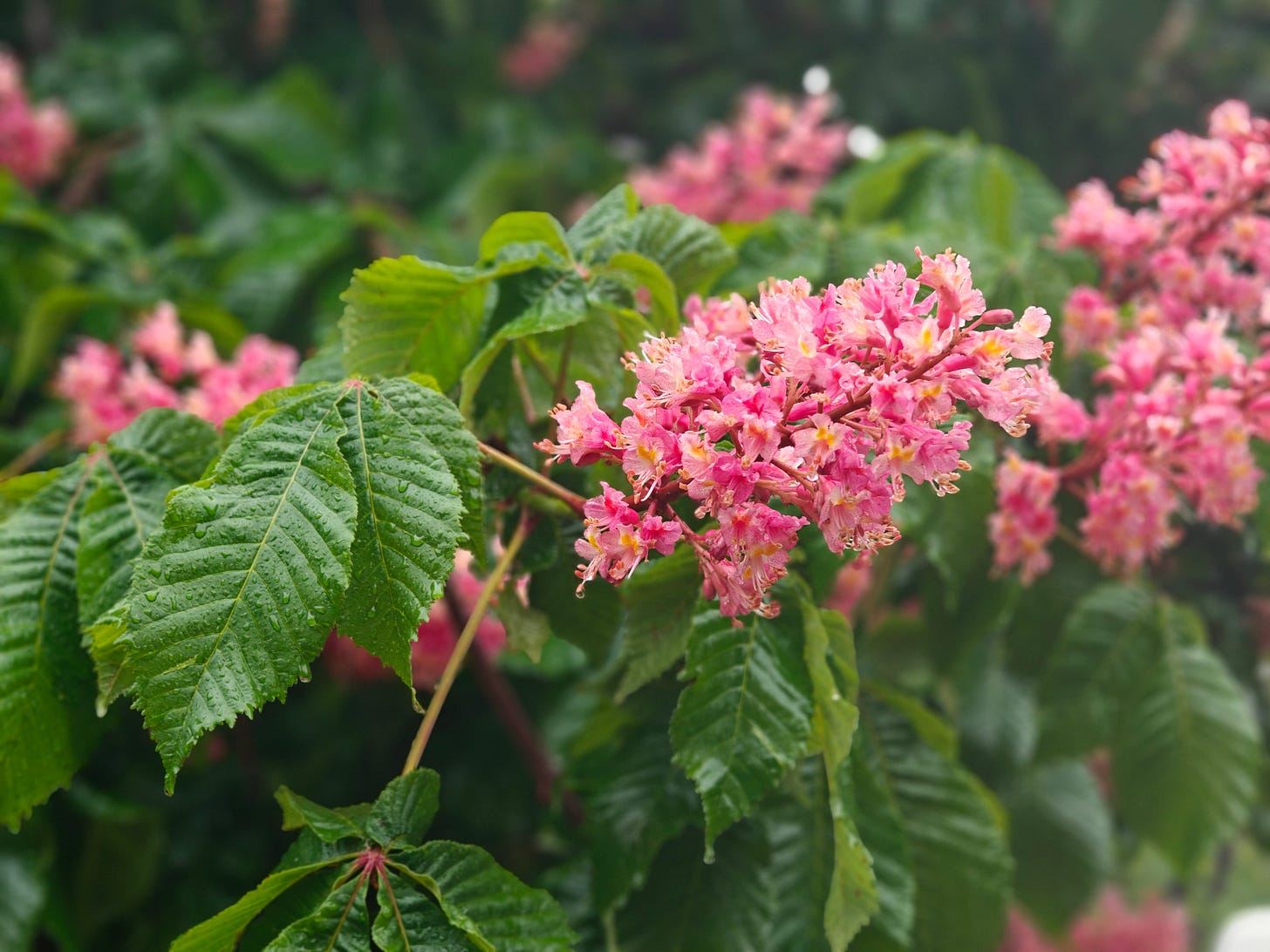

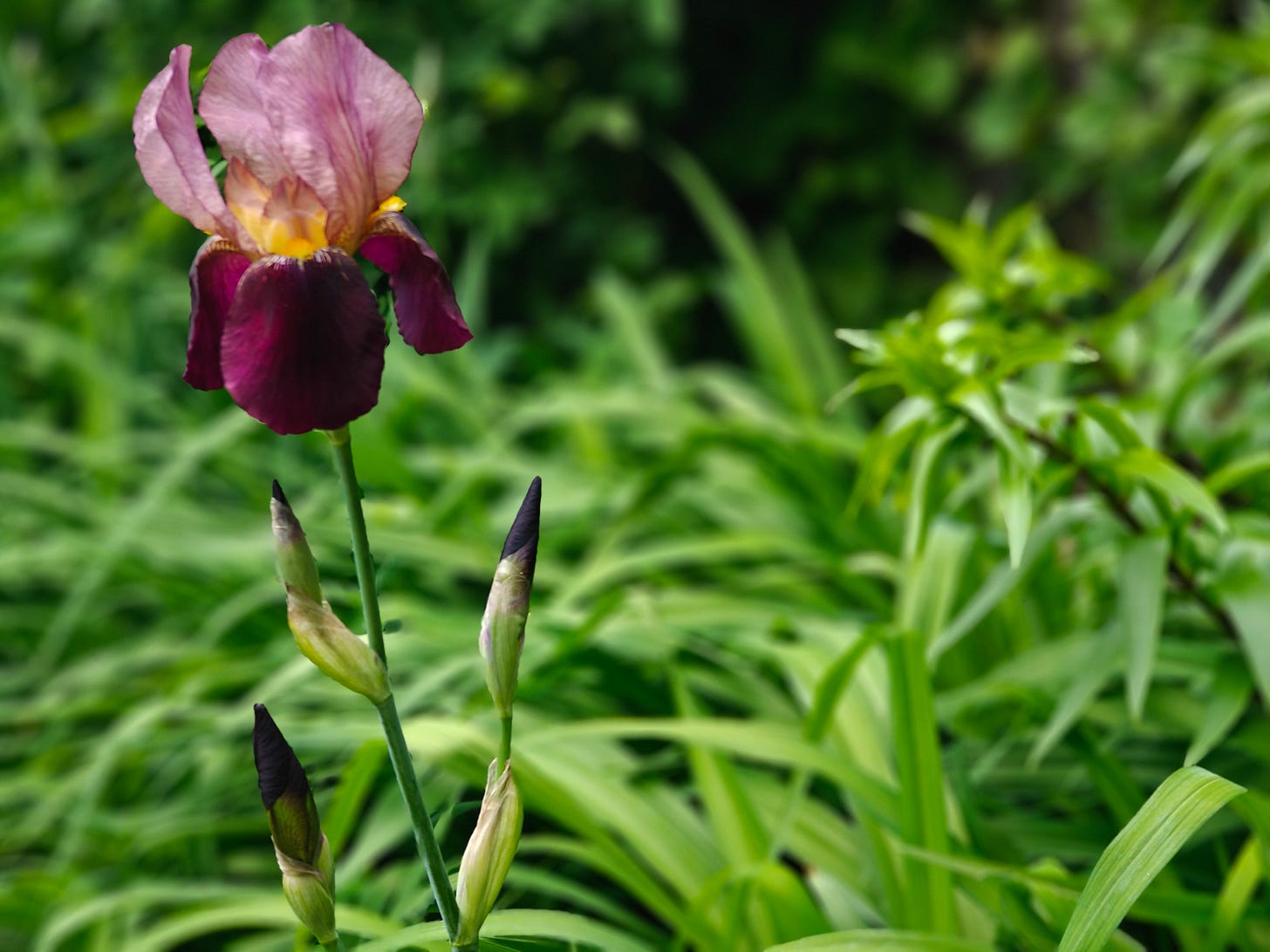
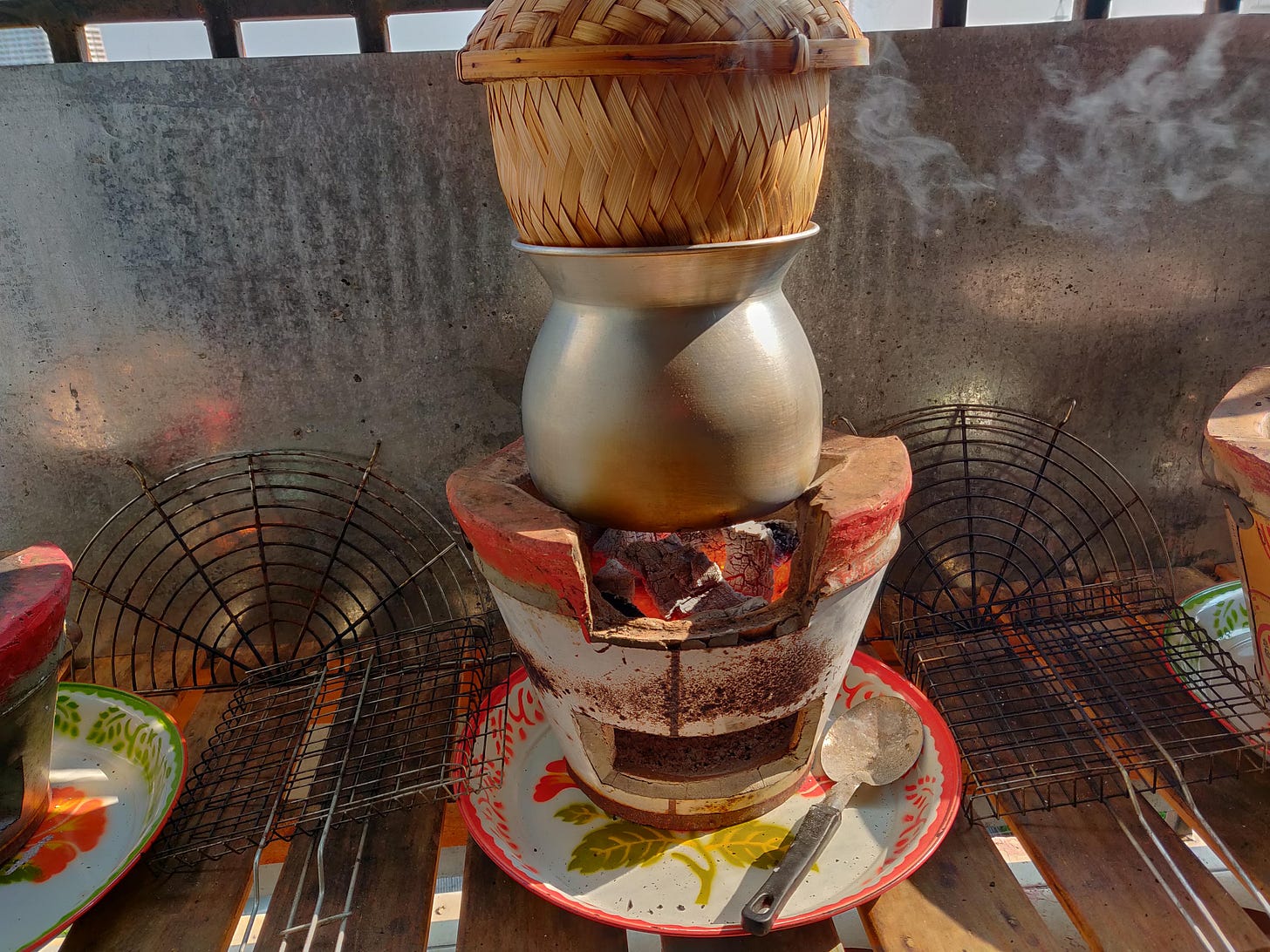
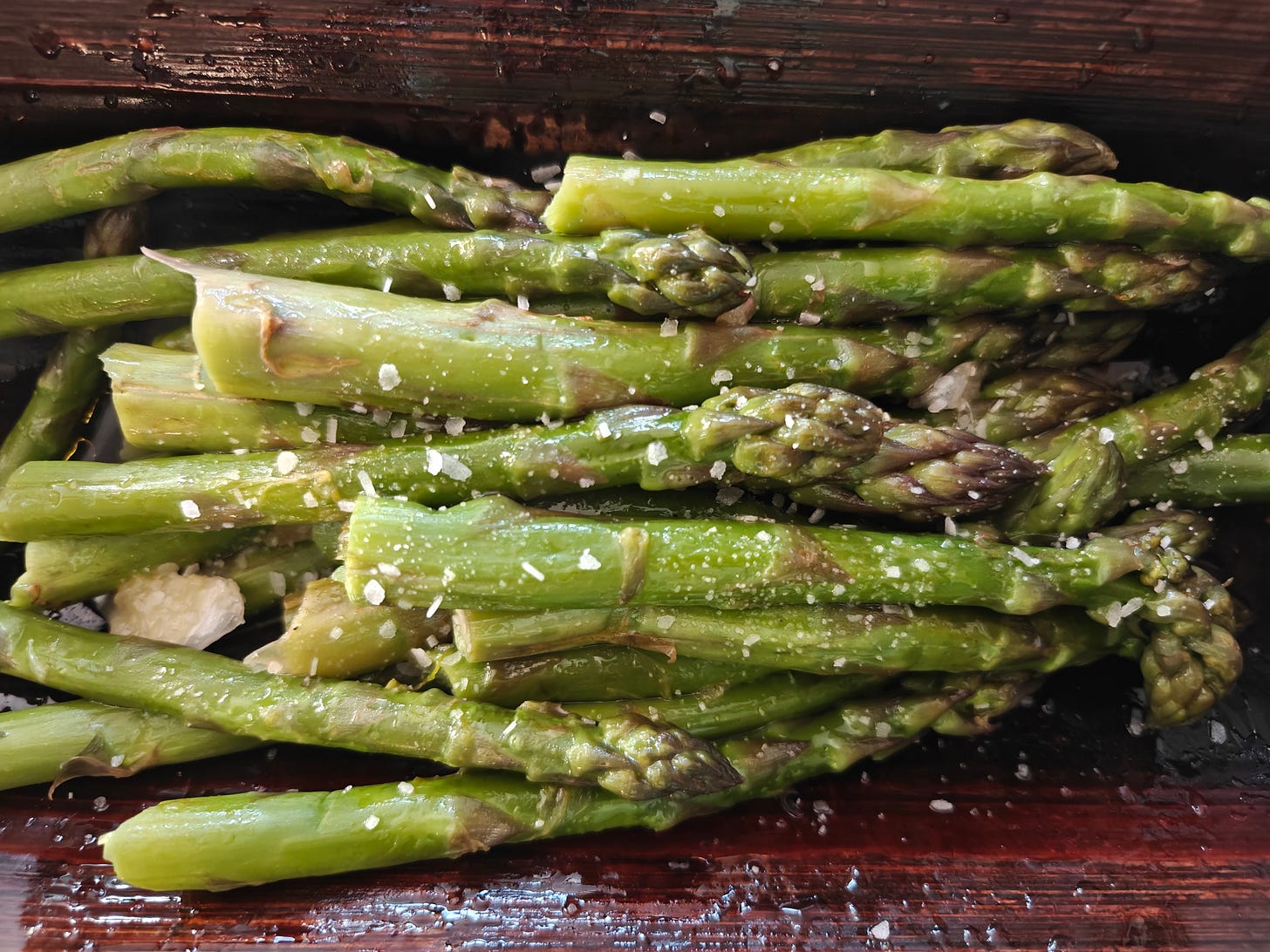
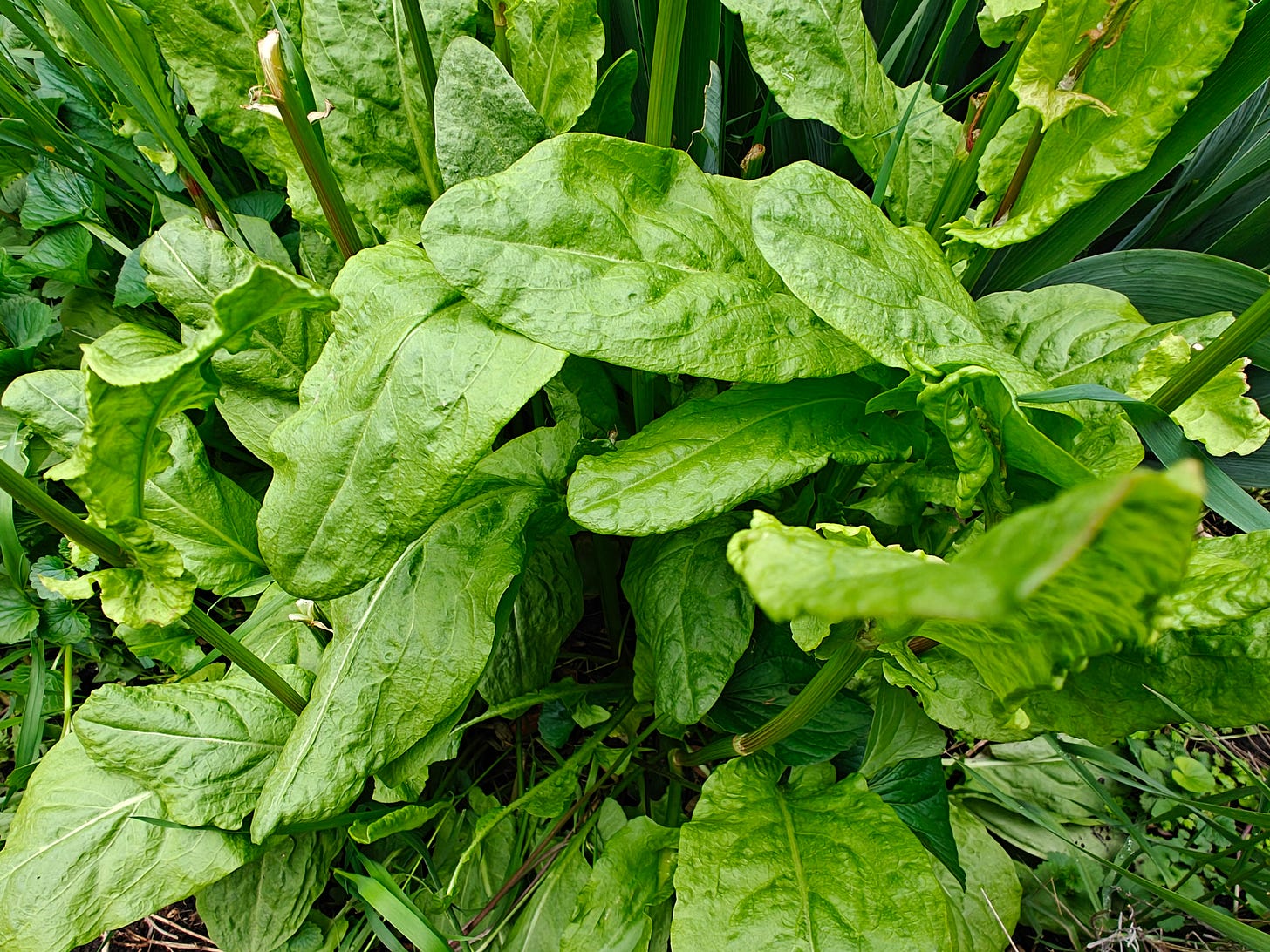

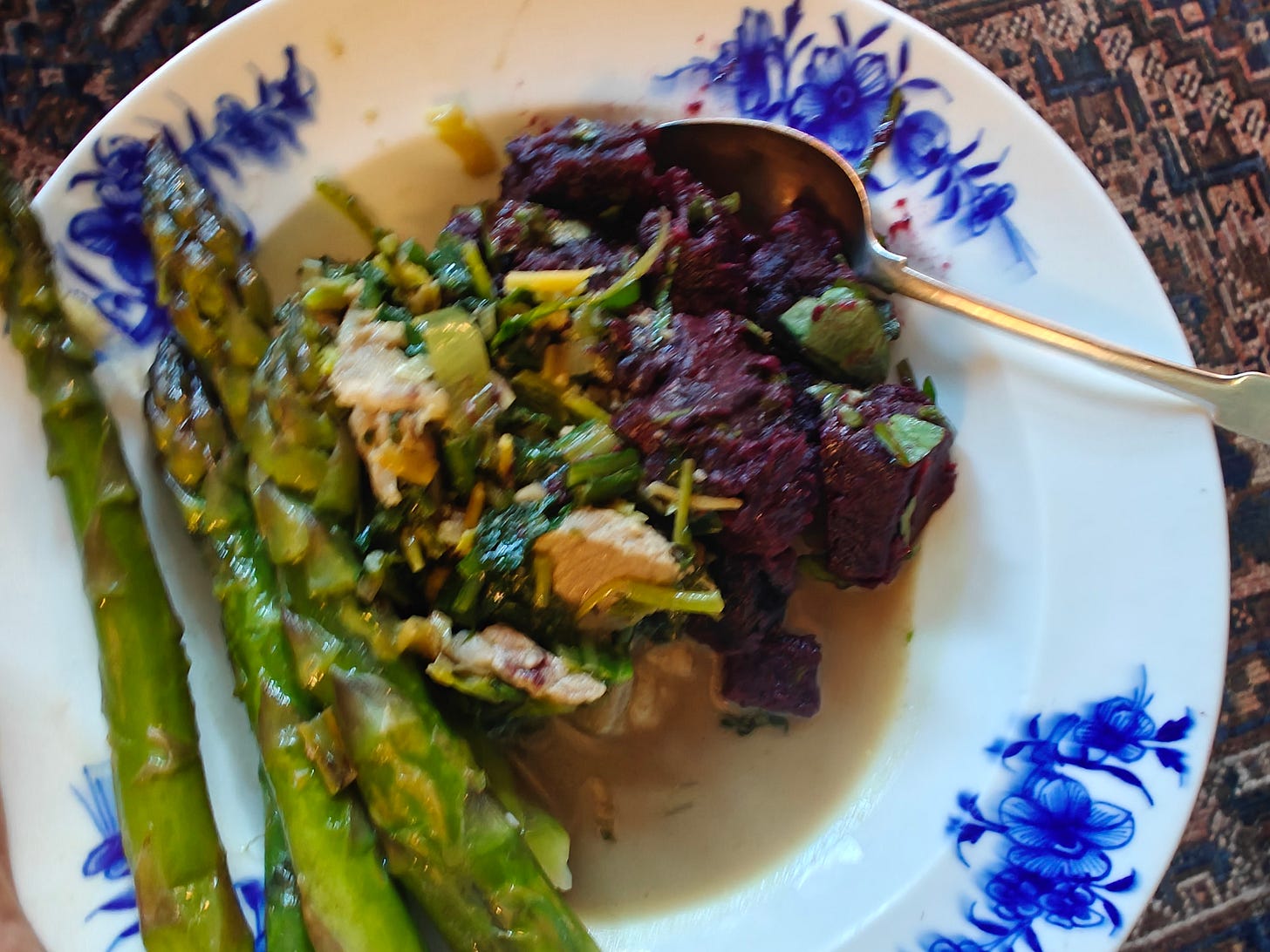
I forgot to say that Ways of Seeing is one of the books that all right-thinking art students read when I was in art school in London 50 years ago. You have made me want to reread it and I can't find my copy. Thank you for the thoughtful essay.
Dear Naomi,
Your reflection lingers with me—it articulates something I’ve felt but hadn’t quite found the words for. You write with clarity, care, and a kind of grounded defiance that feels deeply needed.
You’re absolutely right: today’s food photography often sanctifies perfection. I remember preparing a portfolio of filled bagels some years ago. The food photographer crouched over each one with tweezers, adjusting every parsley leaf and drizzle of sauce until the image looked effortlessly casual. But of course, it was entirely orchestrated. Like buying designer jeans pre-ripped to appear worn—untouched by life, but selling the illusion of experience.
And now, as you know, we’ve entered a second wave: the cooking video. I’ve learned how the apps work. You can fake the sound of chopping, the hiss of steam, even the sizzle of garlic hitting the pan. It’s theatre. Nothing is real. And yet, I’ve surrendered to it too. If you want your first cookbook to be seen, you have to play along. Edit. Trim. Dramatize. Seduce.
What’s so troubling—so tragic—is not just the artificiality, but what it reveals about us. We’ve become fast food. We want everything instantly: beauty, pleasure, results. We’ve lost the joy of getting there—the physical, fragrant, messy process of cooking that demands presence, and rewards improvisation.
That’s why your purple yam supper moved me so deeply. It‘s imperfectly perfect. The sorrel chopped by instinct. The pairing of tart and sweet a matter of feel, not formula. It’s the kind of cooking that doesn’t just feed us—it restores us.
With admiration,
Elli